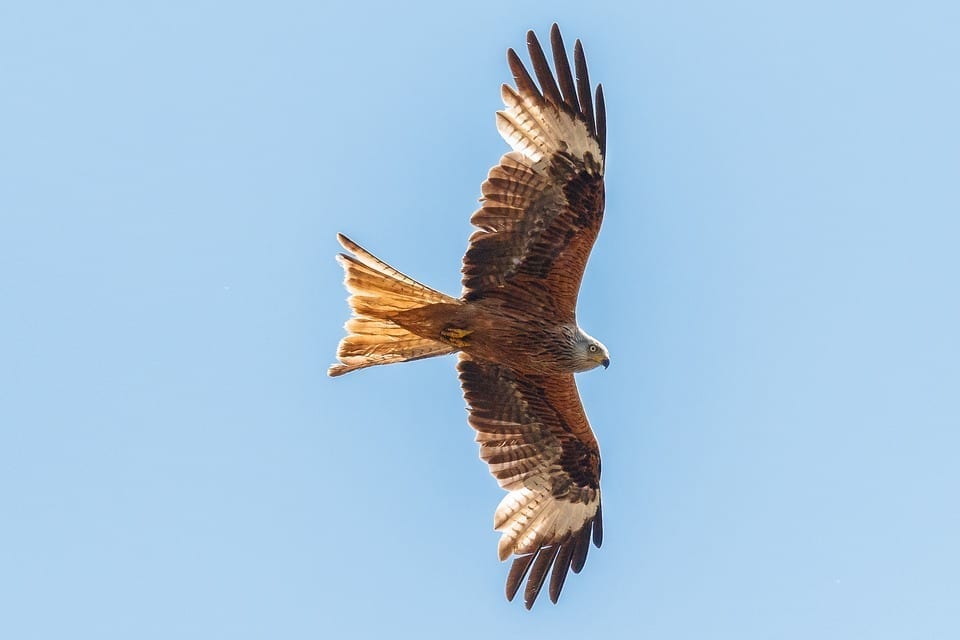Red Kite
Barcud Coch. Milvus milvus
Kites are easy to identify thanks to their distinctive forked tail. Their plumage is a rich chestnut, shot with black, and their dark brown wings have white patches towards the tip. They have pale grey heads and bright-yellow legs. In the Welsh population there is a rare white form of kite accounting for approximately 1% of hatchlings. Kites scavenge carrion and prey on worms, small birds, and small mammals. Red kites can thrive in a wide range of habitats including woodlands, moors, and wetlands. They usually mate for life and build untidy nests from twigs in the high branches of trees, where they lay 1-4 eggs annually. Females signal to their young to play dead should danger approach. Kites are well-known for their aeronautical skills, including a dramatic twist that sees them fly briefly upside-down, flashing their talons in warning to any birds trying to mob them.
In Britain, the red kite was pushed close to extinction due to extreme persecution and collectors stealing eggs between the 1800’s and mid-1900’s. Completely extinct in England and Scotland, a few breeding pairs remained in the Cothi and Tywi valleys of mid-west Wales. Local landowners began a nest protection programme, and over the last 100 years their numbers have steadily increased, resulting in the healthy population we have in Wales today. The red kite is Wales’ national bird.
Status at Cambrian Wildwood: Present

